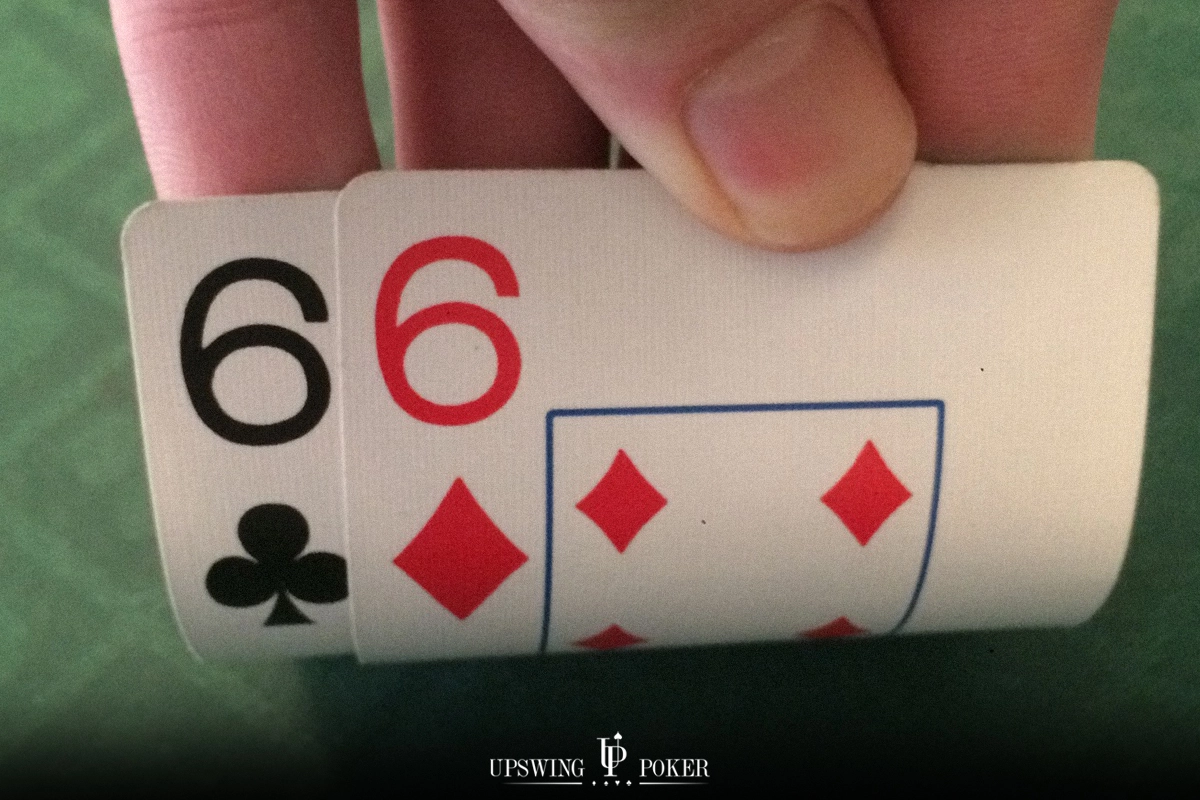
Medium pairs, such as six, are solid starting hands that are often worth playing pre-flop. But most of the time, the flop will have at least one pass.
To help you avoid getting lost with them before and after a setback, I wrote this article to make playing Pocket Sixes a little easier.
Here’s what I’m going to show:
How to play Pocket Sixes Pre-flop
3 tips for playing 6 as a Pre-flop Moneymaker
3 Tips to Play Sixes as a Preflop Caller
Let’s dive in!
Unopened jar
Pocket Sixes are in the top 6-7% of all starting hands.
You should always raise with the Pocket Sixes pre-flop when the action comes to you, regardless of your gamek position. You should never open up to them (or any hand for that matter).
anti-tank
When it comes to getting a raise with Pocket Sixes, your location is an important gamek factor.
From Big Blind: Just call vs raise with Pocket Sixes. The odds you get on your required investment in the stake make fundraising very attractive, even though you have to play in no position with a high stack-to-pot ratio .
From the Small Blind gamek: Cold calls from Small Blind in money games almost always lose. For this reason, you should only 3-bet from this position.
But if you’re up against an early or mid bull position, 3-bet with Pocket Sixes is too loose. Therefore, you should only 3-bet the Pocket Sixes gamek from Small Blind when faced with an open from Cutoff or Button. You can just let it go back to the previous positions.
The exception is when you’re on a mobile game playing a very soft live game and the players in Big Blind are not aggressive. In this case, you can profitably call from Small Blind. Just make sure you’re selective when calling from the Small Blind — you should still fold if the raise is too big or Big Blind is a decent player who can force you out of the pot.
From Button: Button is a special place because you are guaranteed to be the last player to act after flipping the mobile game. This fact increases your equity realization. With this in mind, you are encouraged to have a call scope relative to other locations. Sixes is the perfect hand to call from Button because it plays poorly with 4-bets and is too strong to discard.
From the rest: From other positions, Pocket Sixes is not strong enough to call or 3-bet because the open-raise range of “GTO” is too strong. Of course, if you’re up against a loose player, then Cold Calling or 3-bet are probably your best options.
Again, just be selective when you do this mobile game. If the players behind you don’t punish you for calling coldly, you can call. Or, if the original bettor is the one you want to target, you can bet 3x.
Against 3 . bets
When facing a 3-bet, both your position and your opponent’s are important.
Especially when you are in no position, you should combine call and fold with Pocket Sixes. That said, if you believe your opponent won’t notice if you’re always doing one way or another, and won’t adjust his strategy either, then go ahead and choose the option that seems better. for that player.
For example, if the players are very tight and the 3-bet size is not too large, I would lean towards always calling with Sixes. This is because you can stack a player when you fail in a set with his strong range.
Against 4 . bets
When faced with a 4-bet, you should sometimes call and sometimes fold with Pocket Sixes depending on which position is involved in the action.
If you are in a position against 4 bettors, calling becomes a lot more attractive. If you are in a wide range against a wide range position (such as Small Blind vs Button), a call or even a 5-bet all-in (with 100bb stacks) might be reasonable. Remember that the 5-bet all-in option will only be good for players who play 4-bet bluff with moderate frequency.